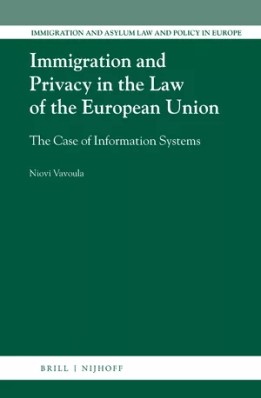
In this book, Niovi Vavoula examines the privacy challenges raised by the establishment, operation and reconfiguration of EU-wide information systems that store personal data, including biometrics, of different categories of third-country nationals that may be used for various immigration related and law enforcement purposes. The monograph analyses both the currently operational databases - Schengen Information System (SIS), Visa Information System (VIS) and Eurodac - and forthcoming systems - Entry/Exit System (EES), European Travel Information and Authorisation Systems (ETIAS) and European Criminal Record Information System for Third-Country Nationals (ECRIS-TCN) - as well as their future interoperability. To assess the compatibility of legal instruments governing information systems and their interoperability with the right to respect for private life, the author calls for the centrality of privacy as the appropriate lens through which instruments involving the processing of personal data should be viewed and offers a typology of privacy standards based on relevant case law by the Strasbourg and Luxemburg Courts.